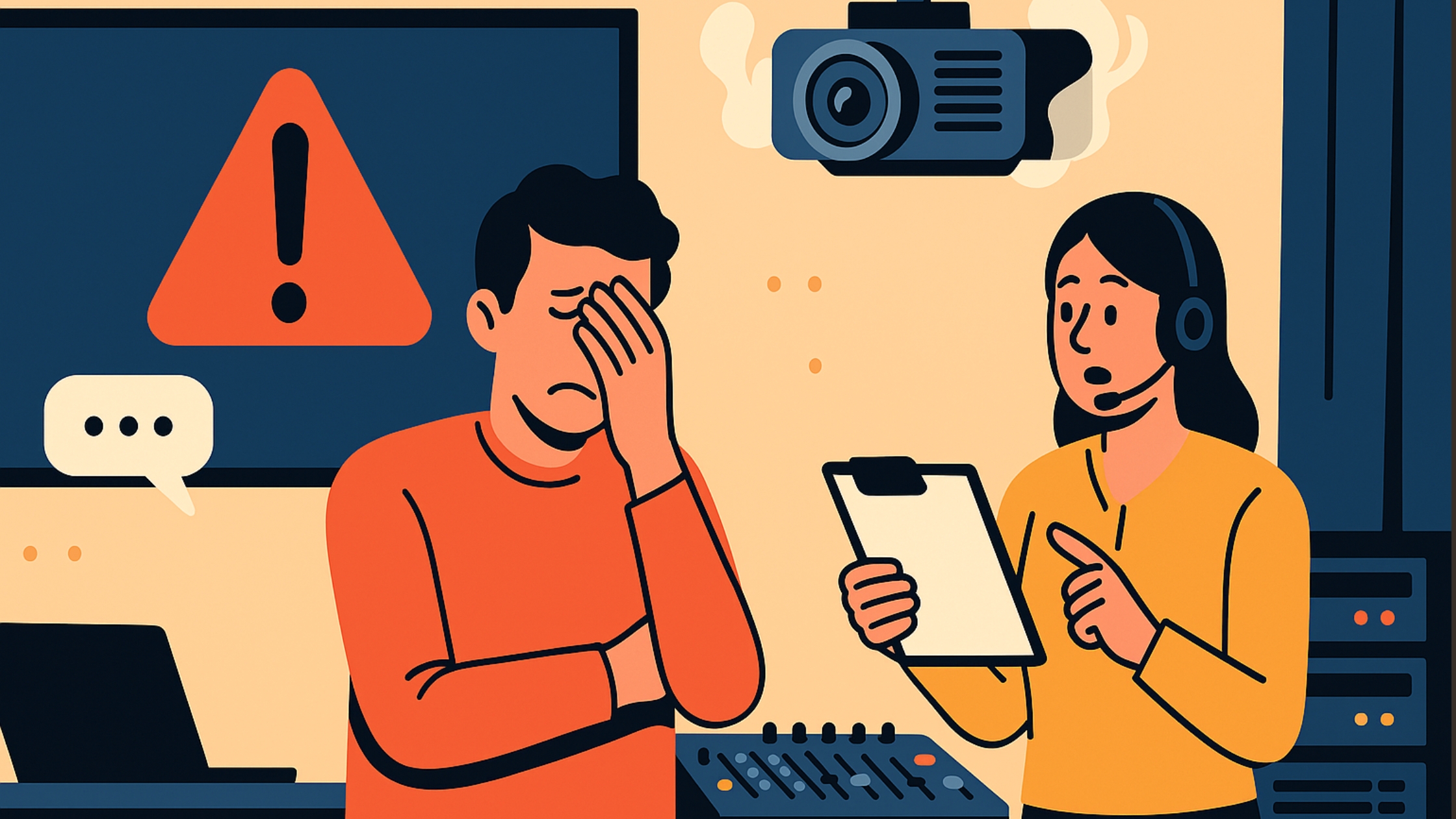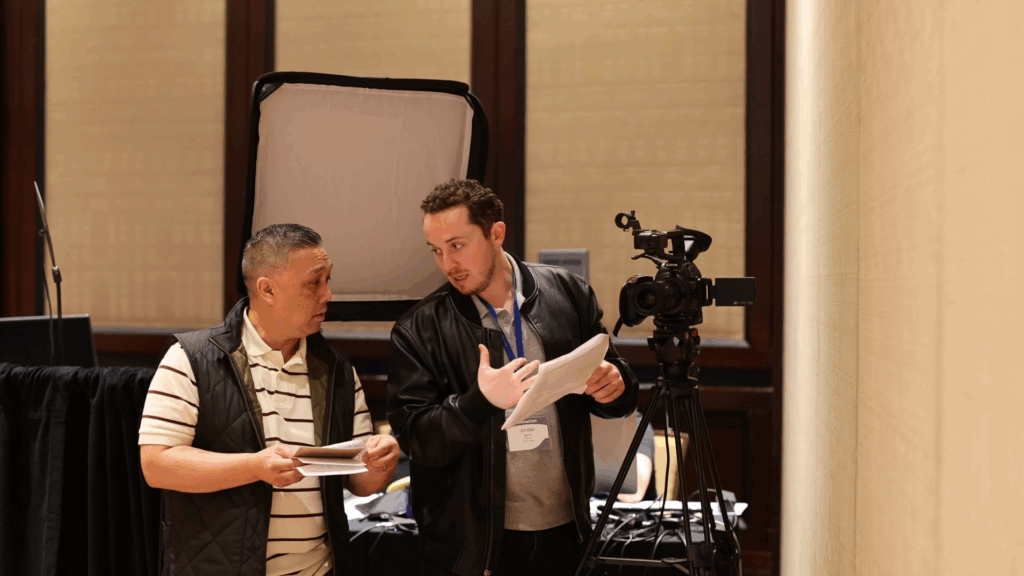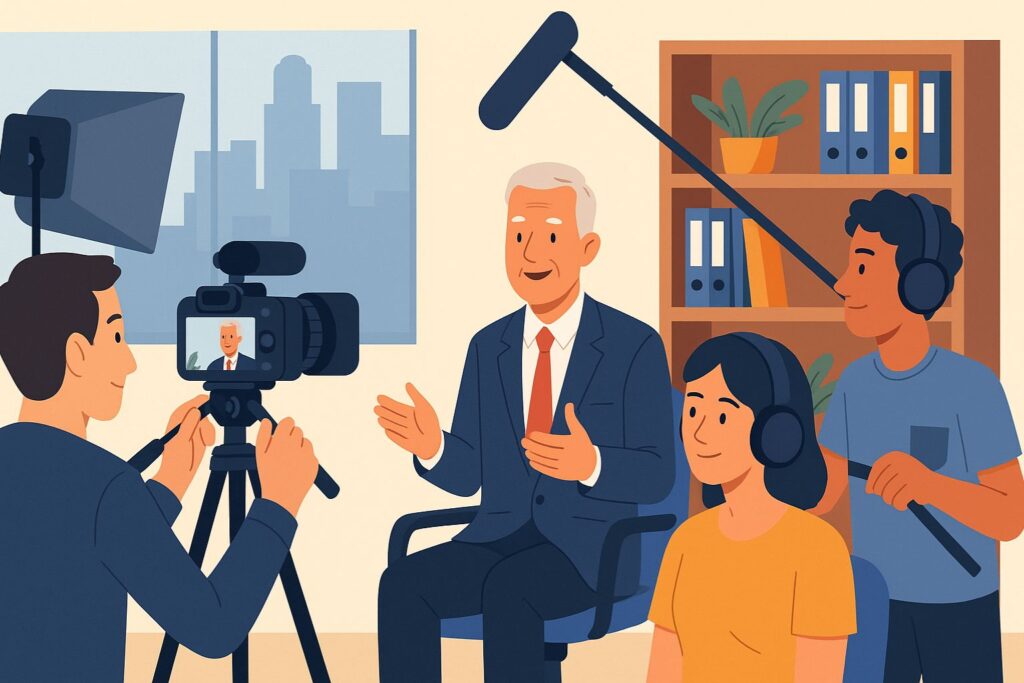When AV goes wrong at a live event, it doesn’t just cause a hiccup—it can completely derail your audience’s experience. As a video production partner who’s worked behind the scenes on everything from multi-stage conferences to small galas, we’ve seen what happens when AV is overlooked.
Here’s a guide to the most common AV mistakes (and how you can avoid them).
1. Waiting Too Long to Loop in Your AV Team
One of the biggest mistakes? Bringing your AV partner in too late.
Why it matters: Without early planning, your team may choose a venue, build a schedule, or book talent that doesn’t align with your tech setup.
What to do: Involve your AV or video partner as soon as you start planning. They can help review venue specs, plan camera placements, and make sure you’re not locked into something that won’t work.
Pro Tip: At JSB Video, we offer pre-event consultations to spot issues early—before they become expensive problems.
2. Not Doing a Full Tech Rehearsal
A soundcheck isn’t enough. You need a full run-through.
Why it matters: You’d be surprised how often cues are missed, mic batteries die, or video files won’t play.
What to do: Set aside time for a full AV rehearsal with presenters, show cues, video playback, and switching. Run it exactly like the real thing.
3. Assuming the Venue’s AV Is “Good Enough”
Many venues have in-house AV. That doesn’t mean it’s the right fit for your event.
Why it matters: Relying on the venue’s default package often leads to poor audio, outdated projectors, or limited flexibility.
What to do: Ask detailed questions. What equipment is included? Can you bring in your own team? What’s the backup plan if something fails?
From Experience: We’ve worked in venues where the only XLR input was behind a locked panel—and no one had the key.
4. Forgetting About Audience Experience
You might have great speakers. But if the mics cut out or the livestream lags, the audience will remember the tech issues—not the content.
Why it matters: Poor AV distracts from your message and damages your brand perception.
What to do: Think like an attendee. Can they see the screen? Hear clearly from the back row? Engage with virtual speakers without buffering?
5. Not Capturing the Content for Later Use
If you’re spending time and money on a big event, don’t walk away with nothing to show for it.
Why it matters: A well-shot highlight reel or recap video can stretch your event’s impact for months.
What to do: Plan in advance with your AV or video team to record key sessions, gather b-roll, and repurpose footage for marketing.
At JSB Video, we help clients build entire content strategies around one event day.
6. Miscommunication Between Teams
Tech issues often come down to a lack of clarity.
Why it matters: When planners, presenters, and AV teams aren’t aligned, details fall through the cracks.
What to do: Create a shared run of show. Have one point of contact who keeps everyone in sync.
7. Underestimating Setup and Strike Time
Event day is not the time to discover that setup takes twice as long as expected.
Why it matters: Tight load-in windows, freight elevator delays, or venue restrictions can derail the timeline.
What to do: Build in buffer time and walk the space ahead of time. Confirm access points and power needs.
Final Thoughts
Great AV is invisible. When everything works, nobody notices. But when it fails, it steals the spotlight.
At JSB Video, we work with event planners, producers, and comms teams to make sure the tech doesn’t just work—it elevates your message.
Want help avoiding these AV pitfalls at your next event? Let’s talk.







